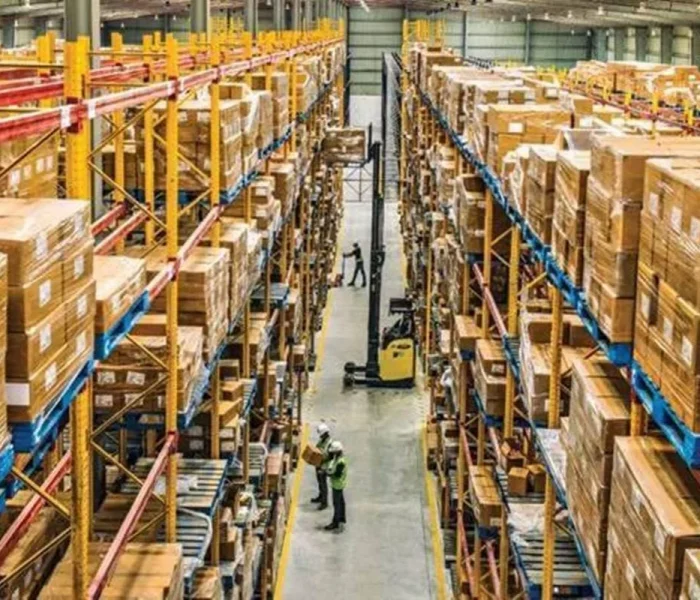How to Use India’s Free Trade Zones for Efficient Imports
India’s Free Trade Zones, often referred to as Special Economic Zones (SEZs) or Free Trade Warehousing Zones (FTWZs), offer a unique opportunity for importers worldwide to streamline logistics, reduce costs, and optimize their supply chain. Understanding how these zones operate, and how to leverage them effectively, can be a game changer for any global business sourcing from India.
At Redex Global, we believe in building informed trade partnerships. So here’s everything you need to know — from the mechanics of Free Trade Zones in India to the practical steps you can take to benefit from them.
What Are India’s Free Trade Zones?
India’s Free Trade Zones are designated areas where goods can be imported, stored, processed, and re-exported without being subject to the usual customs regulations and tariffs that apply in the domestic territory. These zones operate under special policies to attract foreign investment, promote exports, and enhance ease of doing business.
There are two main types of such zones relevant to importers:
- Special Economic Zones (SEZs)
- Government-defined zones with a focus on manufacturing and services.
- Ideal for long-term investment and production.
- Offer tax incentives and relaxed labour laws.
- Free Trade Warehousing Zones (FTWZs)
- Specifically created for warehousing and trading activities.
- Designed to facilitate fast and duty-free movement of goods.
- Perfect for importers looking for storage, consolidation, labelling, or repackaging before final delivery.

Key Benefits for Importers
✅ Customs Duty Benefits
Goods stored in an FTWZ are not subject to import duties until they enter the domestic market. If you’re re-exporting or delaying entry into India, this deferral improves cash flow.
✅ Ease of Re-export
If your goods are meant for multiple South Asian or Middle Eastern markets, FTWZs allow you to import into India and re-export elsewhere without paying Indian customs duties.
✅ Inventory Management
You can stock inventory in India closer to your end-market without clearing customs until needed. This gives you flexibility in managing demand fluctuations and shorter lead times for your buyers.
✅ Value-added Services
FTWZs allow for labelling, kitting, assembly, testing, or minor processing — without the goods losing their foreign status. This is useful for compliance or branding needs for different countries.
✅ Cost Efficiency
Since most FTWZs are located near ports (e.g., Nhava Sheva, Chennai, Mundra), transport and handling costs reduce significantly. Plus, warehousing in FTWZs is exempt from service tax and GST.
Where Are These Zones Located?
Some prominent FTWZs and SEZs used by global importers include:
Zone Name | Location | Type | Key Strength |
Arshiya FTWZ | Mumbai (Nhava Sheva) | FTWZ | Port proximity, largest private FTWZ |
JAFZA-India (Planned) | Navi Mumbai | FTWZ | Dubai-backed investment hub |
GIFT City SEZ | Gujarat | SEZ | Finance, fintech, and trading |
Sri City SEZ | Andhra Pradesh | SEZ | Multi-sector, near Chennai Port |
Kandla SEZ | Gujarat | SEZ | One of India’s oldest SEZs |
How to Leverage a Free Trade Zone as an Importer
Here’s a step-by-step breakdown of how importers can work with FTWZs or SEZs in India:
Step 1: Partner with a Licensed FTWZ Operator
You’ll need a logistics or trade partner authorized to operate within the FTWZ. They’ll handle customs paperwork, warehousing, and help you navigate local regulations.
At Redex Global, we regularly coordinate with such operators on behalf of our clients.
Step 2: Plan for Delayed Duty Payments
Use the FTWZ to hold inventory without triggering import duties. This is especially helpful when awaiting demand signals or while consolidating shipments.
Step 3: Repackage, Label, or Test
If your importing country requires specific packaging, barcodes, or testing, do it inside the FTWZ — while your goods are still considered “foreign.”
Step 4: Re-export or Sell Locally
You can:
- Re-export to other countries (Middle East, Africa, etc.) directly from the FTWZ, or
- Import into India’s domestic market by paying duties only when goods are removed from the zone.
Step 5: Use Multi-country Consolidation
If you’re sourcing from multiple countries (e.g., India, China, Vietnam), you can consolidate them in one Indian FTWZ before shipping to final destinations.
Compliance and Documentation
Importers need to ensure compliance with:
- Customs regulations
- FTWZ operator protocols
- Export-Import (EXIM) policies
- Banking and foreign exchange rules under RBI/EXIM guidelines
The good news is: most FTWZ operators offer end-to-end assistance on documentation, insurance, and clearance.
Common Use Cases by Global Importers
- FMCG Brands: Importing Indian herbal cosmetics, spices, or packaged foods and labelling them per local standards before re-export.
- Apparel Buyers: Consolidating textile and garment shipments from multiple Indian vendors, then dispatching together to Europe or North America.
- Electronics Distributors: Holding stock in India for Just-in-Time delivery to Asian markets.
- Agricultural Buyers: Quality checking and sorting products before releasing into domestic Indian retail.
Final Thoughts
India’s Free Trade Zones are more than just tax havens — they’re strategic hubs for international business. Whether you’re sourcing from India or using it as a regional distribution base, these zones offer financial, logistical, and operational advantages that can significantly boost your import efficiency.
If you’re an importer exploring new routes through India, understanding and utilizing FTWZs and SEZs is not just a smart move — it’s an essential one for modern trade.

